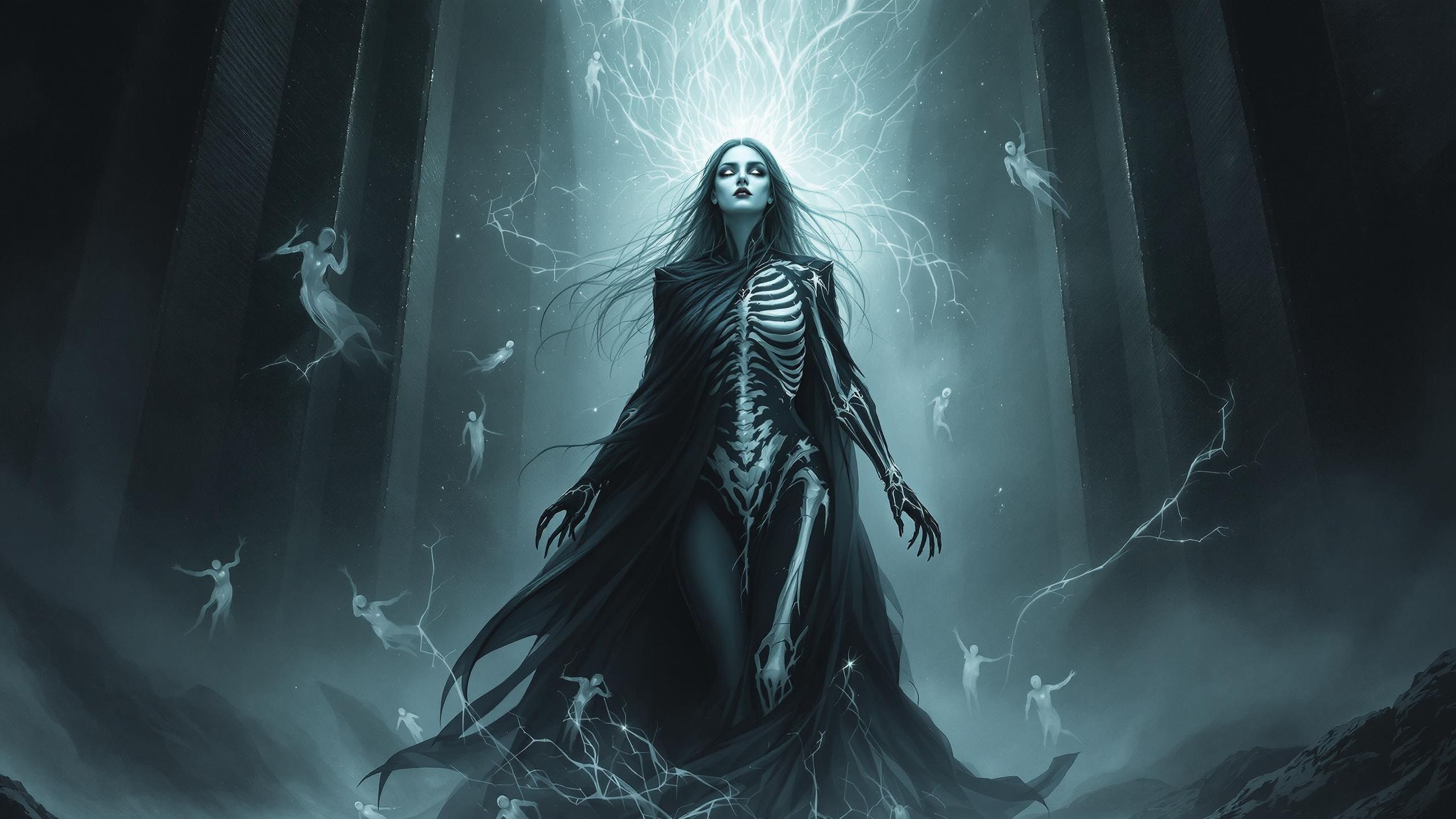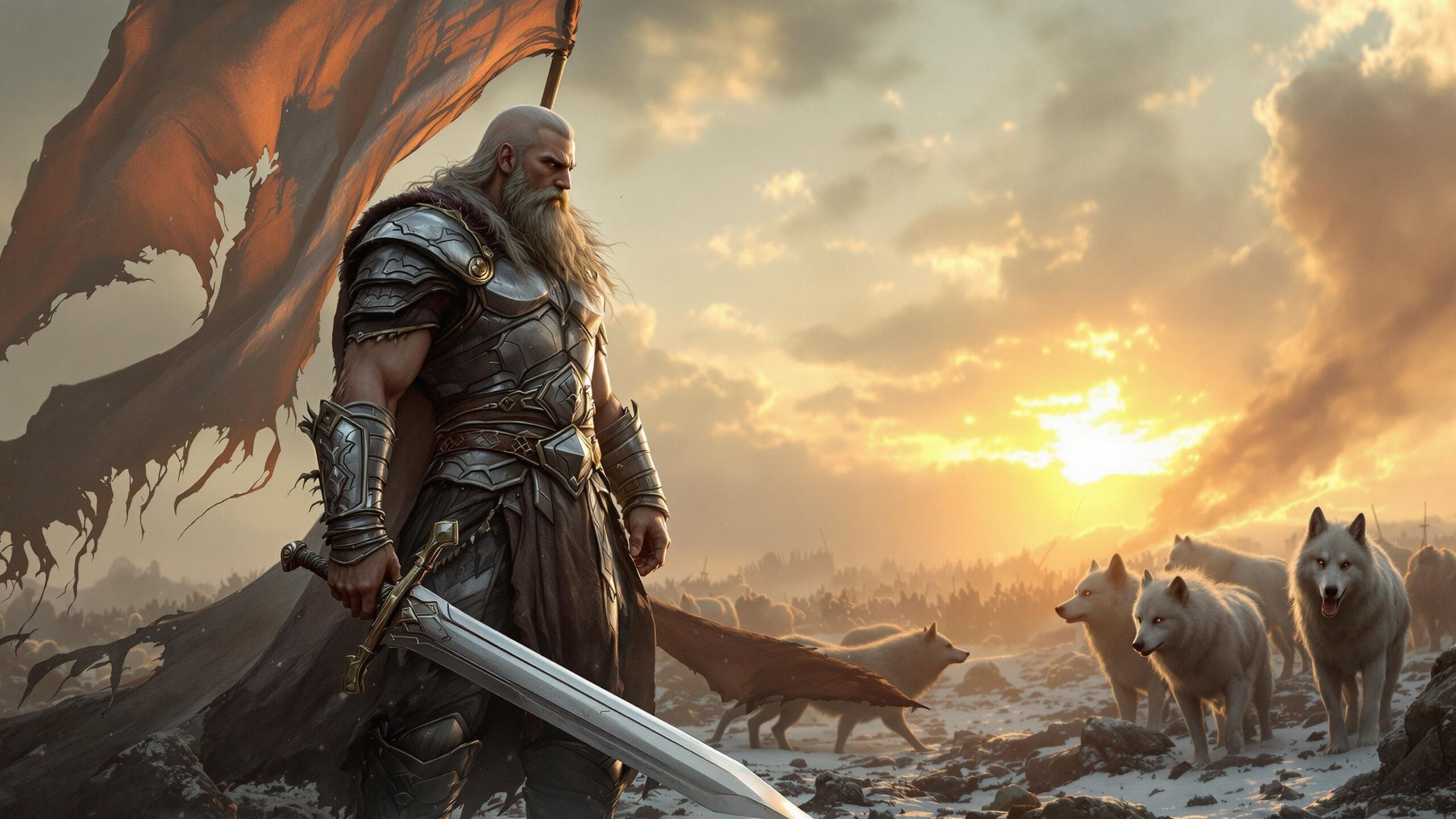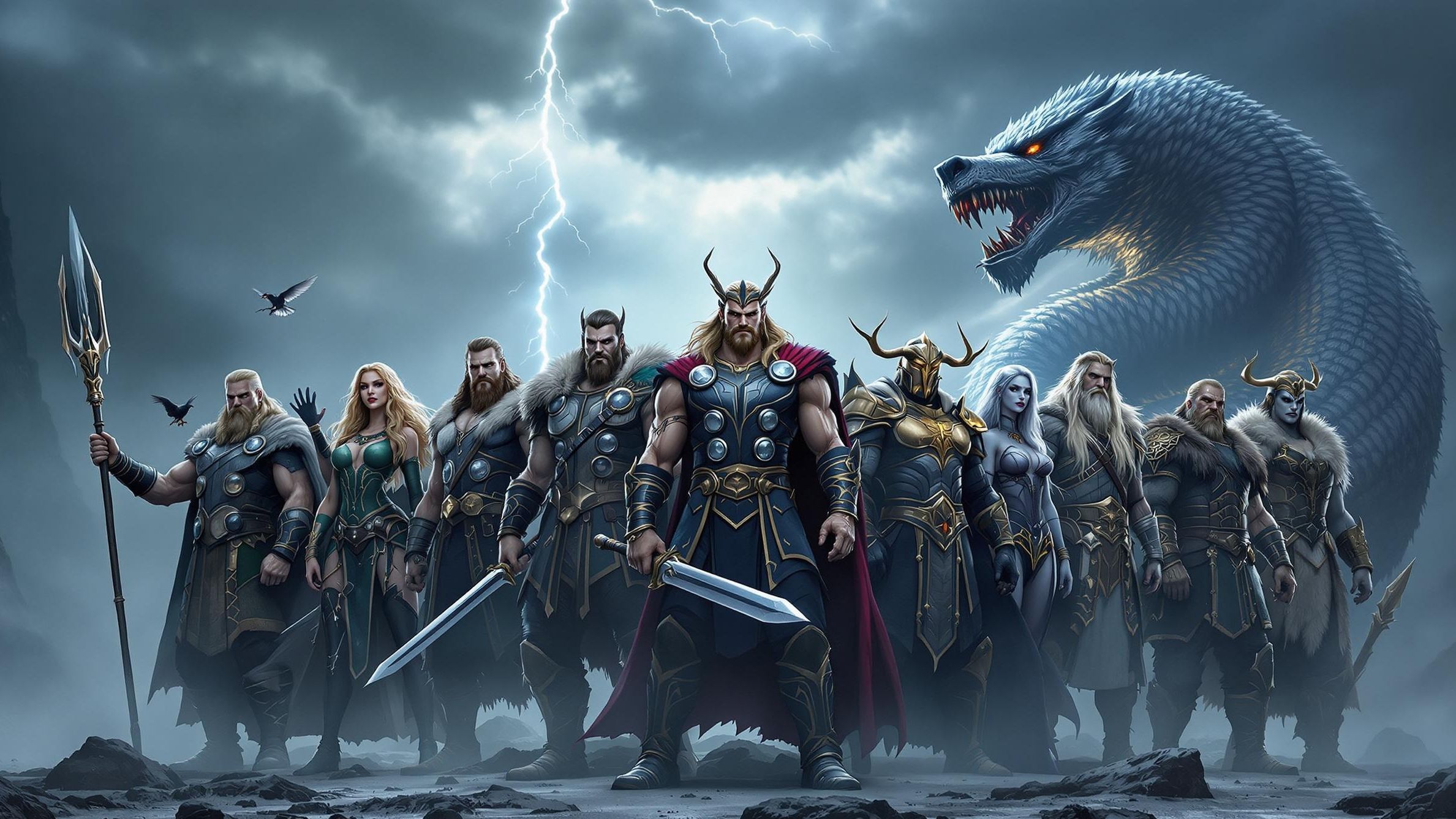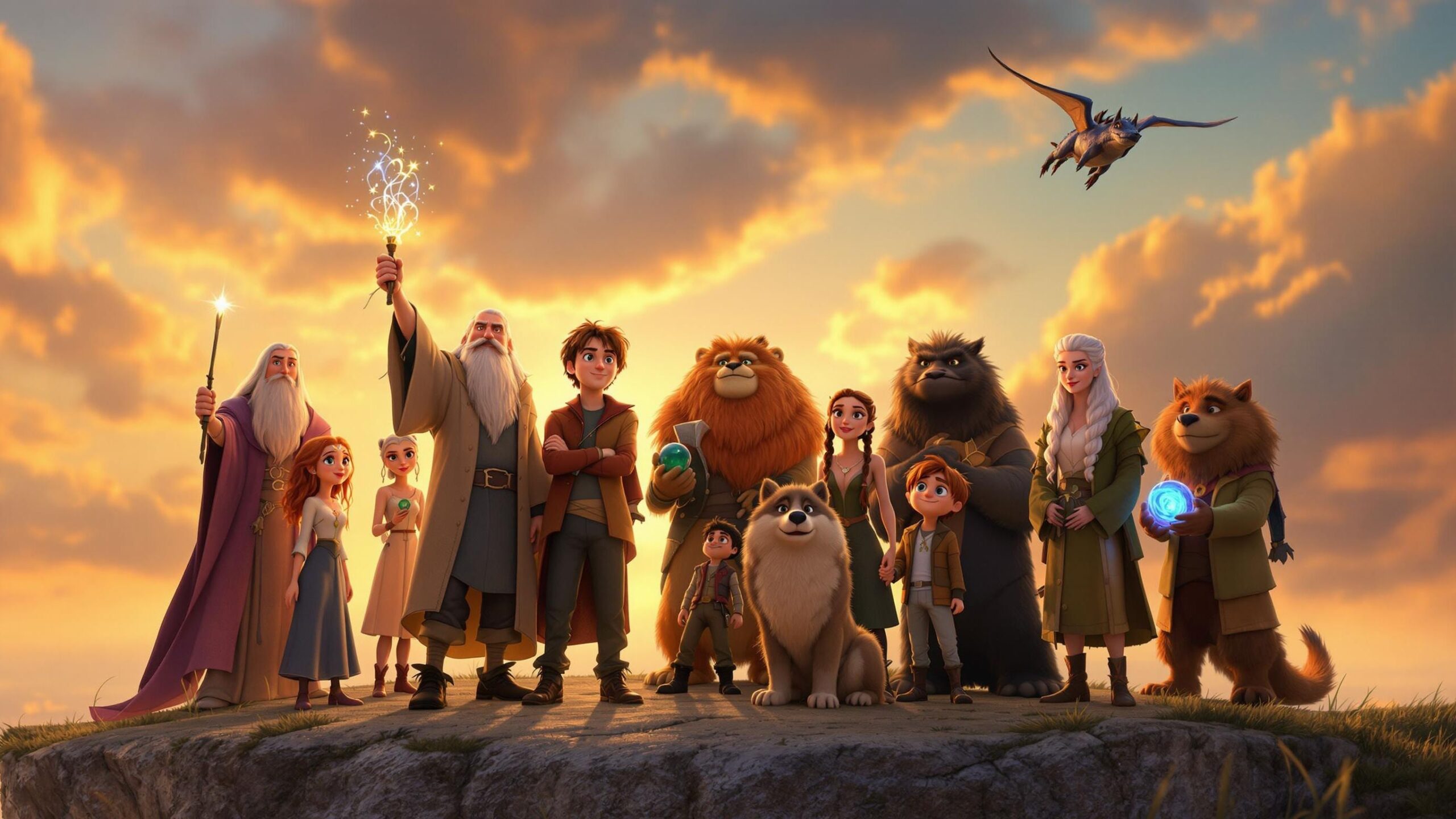Norse mythology is a saga of gods, giants, monsters, and fate—woven with battles, betrayal, and deep symbolism. Rooted in the icy landscapes of Scandinavia, these myths are rich with fierce warriors and mystical beings who embody both the glory and the doom of the Nine Realms. These characters are not just deities or heroes; they represent fundamental forces of nature, wisdom, chaos, and destiny. From the all-seeing Allfather to the trickster who brings about Ragnarok, here are the Top 10 Norse Mythology Characters of All Time—immortalized in legend and still captivating us today.
#10: Hel
Hel rules over the realm of the same name—a cold, shadowy underworld where many of the dead dwell. As the daughter of Loki and the giantess Angrboda, Hel is a figure of awe and dread. Half her body appears alive and beautiful, while the other half is decayed and corpse-like, symbolizing the boundary between life and death. Although not overtly evil, Hel is grim and immovable, overseeing the souls of those who die of sickness or old age rather than in battle. In contrast to Valhalla’s warrior paradise, Helheim is solemn and still. Despite being less active in myth than her siblings Fenrir and Jörmungandr, Hel represents the inescapable fate of all beings. Her eerie demeanor and dominion over the dead make her one of the most compelling—and haunting—figures in Norse mythology.

#9: Tyr
Tyr is the Norse god of war and justice, known for his unwavering sense of honor and duty. His most famous act of bravery is placing his hand in the mouth of the wolf Fenrir as a pledge of trust while the gods bound the beast. When Fenrir realized the trickery, he bit Tyr’s hand off. That loss became a symbol of sacrifice for the greater good. Though not as widely worshipped as Thor or Odin, Tyr’s valor earned him immense respect. His story shows that true strength lies not just in battle but in courage, morality, and sacrifice. In ancient times, Tyr’s name was invoked in matters of law and war, and some scholars even believe he was once the chief deity before Odin rose in prominence. With his single hand and unshakeable resolve, Tyr stands as a quiet yet potent force in Norse myth.

#8: Heimdall
Heimdall is the watchman of the gods, ever-vigilant on the Bifrost bridge that connects Asgard to the other realms. Possessing extraordinary senses—he can hear grass grow and see for hundreds of miles—Heimdall is destined to blow the Gjallarhorn to signal the start of Ragnarok. His birth was unique; he was said to be the son of nine mothers and bore golden teeth. Known as “the whitest of the gods,” he embodies purity, clarity, and alertness. Despite not being as flashy as Thor or as cunning as Loki, Heimdall plays a pivotal role in maintaining cosmic order. In myth, he often stands in opposition to Loki, and the two are fated to kill each other during the end times. Heimdall’s calm strength and stoic presence make him the embodiment of loyalty and protection in the Norse pantheon.
#7: Baldur
Baldur, the beloved son of Odin and Frigg, represents beauty, light, and innocence in Norse mythology. His tragic story is among the most heart-wrenching in the Norse sagas. Loved by all, Baldur was plagued by dreams of his own death. To protect him, his mother made every object in the world vow not to harm him—except mistletoe. Loki discovered this loophole and tricked Baldur’s blind brother Hodr into killing him with a mistletoe spear. Baldur’s death marked the beginning of Ragnarok, signaling the downfall of the gods. Unlike many Norse figures known for vengeance and war, Baldur radiates purity and peace, making his loss even more profound. His story reflects the inevitability of fate and the fragility of light in a dark world. As a symbol of what’s good and vulnerable, Baldur’s memory casts a long, emotional shadow across Norse myth.
#6: Freyr
Freyr is the god of fertility, peace, and prosperity, associated with sunshine and bountiful harvests. Unlike most Norse deities who revel in battle, Freyr embodies life-giving forces and harmony. A member of the Vanir—a group of gods connected to nature—Freyr is also linked to wealth and kingship. His most famous tale involves his love for the giantess Gerðr. He gives up his magical sword to win her hand, which ultimately costs him dearly during Ragnarok. Freyr rides a shining boar named Gullinbursti and possesses a ship, Skidbladnir, that can fold up like cloth. Despite his more peaceful domain, Freyr is a powerful and noble figure whose sacrifice and love make him a standout character in Norse lore. He’s a reminder that strength can come from nurturing and growth, not just combat.
#5: Freyja
Freyja is the goddess of love, beauty, war, and magic—a complex and powerful figure revered for both her sensuality and her battlefield prowess. She leads the Valkyries and claims half of the slain warriors to her hall, Sessrúmnir, rivaling Odin’s Valhalla. Freyja is also a master of seidr, a form of Norse magic, and was said to have taught it to Odin. Her necklace, Brísingamen, is a symbol of desire and strength, and many myths involve gods and giants vying for her affection or artifacts. She rides a chariot pulled by cats and often transforms into a falcon. Freyja’s emotional depth and magical might make her one of the most dynamic figures in Norse mythology. She’s not just a love goddess—she’s a warrior, a weeper, a wanderer, and a witch. Her duality captures the fierce beauty of the Norse spirit.
#4: Jörmungandr
Jörmungandr, the World Serpent, is the colossal offspring of Loki and Angrboda. He’s so massive that he encircles Midgard (Earth) and bites his own tail. This creature represents chaos, boundaries, and the inescapable nature of fate. He is locked in eternal enmity with Thor, and the two are destined to kill each other during Ragnarok. One of their most famous encounters is during Thor’s fishing trip, where the god nearly slays Jörmungandr before the serpent vanishes back into the sea. Jörmungandr’s presence looms over many Norse stories as a symbol of the cosmic balance between order and destruction. Often depicted writhing in the ocean’s depths, his image is striking and ominous. As a being born to end the world, yet bound to it, Jörmungandr stands as a chilling reminder of the inevitable end that even gods cannot escape.
#3: Loki
Loki is the most unpredictable and fascinating character in Norse mythology. A shapeshifter, trickster, and sometimes outright villain, Loki walks the line between ally and enemy of the gods. He fathered monsters like Jörmungandr, Fenrir, and Hel, yet also aided the gods on several occasions—crafting Thor’s hammer, for instance. Loki’s betrayal becomes complete when he orchestrates Baldur’s death, leading to his eventual punishment: bound in a cave with venom dripping onto his face until Ragnarok. Despite—or perhaps because of—his treachery, Loki remains one of the most compelling figures in Norse myth. His cunning, humor, and chaos make him the embodiment of change and transformation. Loki’s story teaches that even the cleverest manipulator can’t outrun fate, and that rebellion comes with a steep cost. Whether you view him as misunderstood or malevolent, Loki leaves an indelible mark on every tale he touches.
#2: Thor
Thor is the god of thunder, protector of mankind, and wielder of the mighty hammer Mjolnir. Son of Odin and Jord, Thor is known for his unmatched strength, booming presence, and short temper. He battles giants, trolls, and monsters to maintain order in the realms. Thor’s hammer not only serves as a weapon but also sanctifies weddings and births, symbolizing protection and vitality. His chariot, pulled by two goats, and his booming laugh make him larger than life. Yet Thor is not a mindless brute—he shows loyalty, courage, and even a sense of humor in many tales. His showdown with Jörmungandr at Ragnarok is one of the most legendary battles in Norse lore, where he kills the serpent but dies from its venom shortly after. Thor’s enduring appeal lies in his heroic simplicity—strength used in defense of the innocent, and thunder called down to smite evil.
#1: Odin
Odin is the Allfather, chief of the Aesir gods, and the most complex character in Norse mythology. A relentless seeker of wisdom, Odin sacrificed his eye for knowledge at Mimir’s well and hung himself from Yggdrasil, the World Tree, to gain mastery of the runes. He commands the Valkyries, oversees Valhalla, and rides an eight-legged horse named Sleipnir. Odin is a god of war, death, poetry, magic, and prophecy. He’s both inspiring and terrifying—an old man in a wide-brimmed hat who walks among mortals in disguise, always seeking secrets and preparing for the end of days. His two ravens, Huginn and Muninn, bring him knowledge from across the worlds. Odin’s desire to understand fate, even as he’s bound to it, makes him both wise and tragic. As the architect of the gods’ glory and their downfall, Odin embodies the Norse view of existence: powerful, fleeting, and fated to end.




